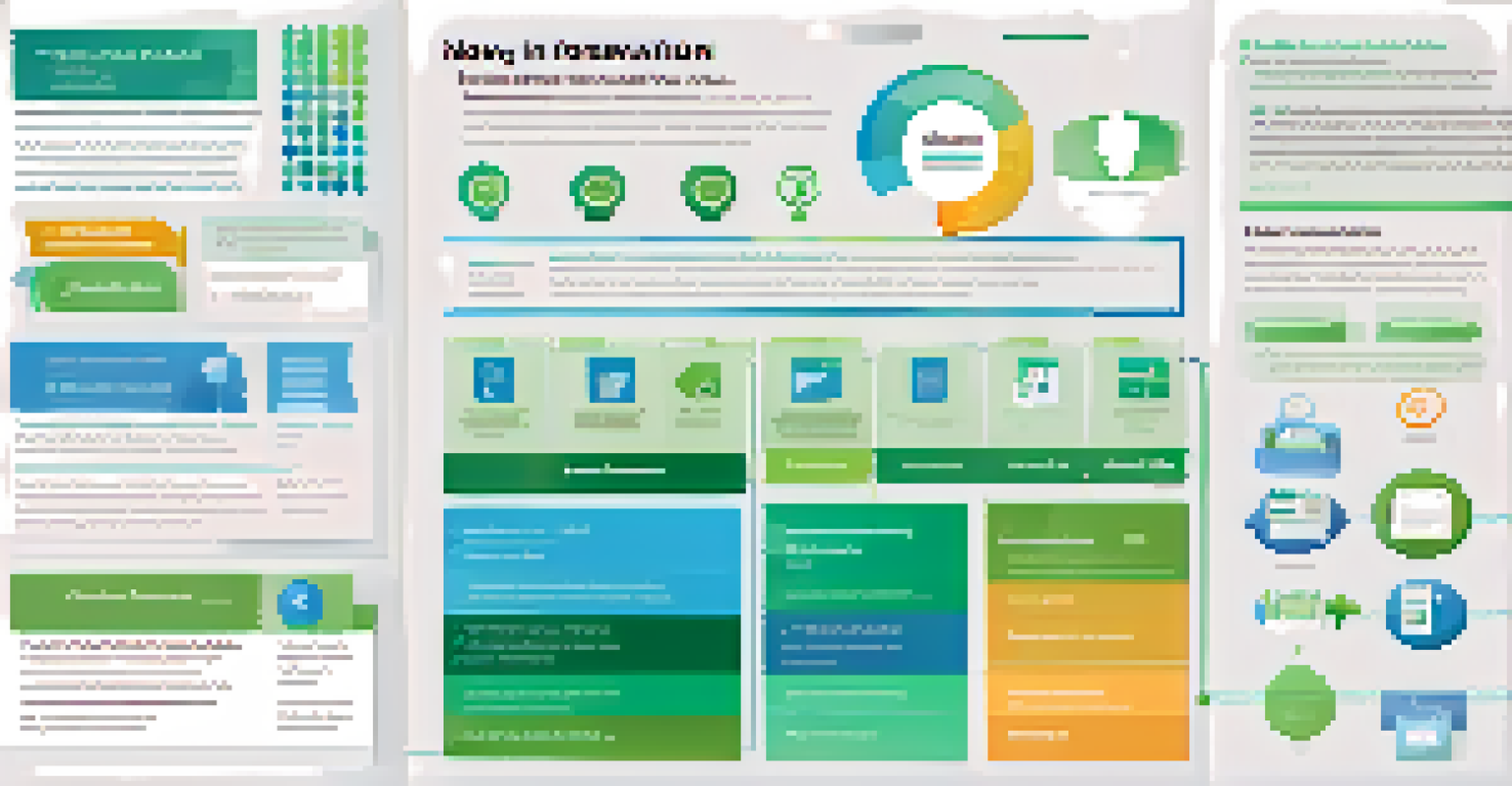The Importance of Documentation in Open Source Projects

Why Documentation Matters in Open Source Projects
Documentation serves as the backbone of any open source project. It helps users and contributors understand how to use the software effectively. Without clear documentation, even the most innovative project can become a maze that users struggle to navigate.
Good documentation is the key to a successful open source project.
Imagine trying to assemble a piece of furniture without instructions—frustrating, right? Similarly, lack of documentation can lead to confusion and misuse of the software. This can discourage potential contributors from getting involved or leaving users feeling lost.
Ultimately, good documentation not only helps users but also fosters a thriving community. When people can easily understand and contribute, the project can grow and improve more rapidly.
Improving User Experience Through Clear Instructions
User experience is paramount, especially in open source projects where users may have varying levels of expertise. Clear documentation can bridge the gap between technical jargon and everyday language, making it accessible for everyone. This inclusivity encourages a diverse user base, enhancing the project's reach.

Think of documentation as a friendly guide; it should lead users through the complexities of the software. By providing step-by-step instructions, screenshots, or even video tutorials, you can create a welcoming environment for new users. This not only enhances their experience but also builds their confidence in using the software.
Documentation is Essential for Success
Clear documentation serves as the backbone of open source projects, helping users and contributors navigate the software effectively.
When users feel comfortable, they're more likely to engage with the community and contribute back. This cycle of support and engagement is what makes open source projects flourish.
Encouraging Contributions Through Comprehensive Guides
For open source projects, contributions are the lifeblood that keeps them evolving. However, potential contributors often hesitate to dive in without a roadmap. Comprehensive contribution guidelines can demystify the process and empower others to participate.
Documentation is not just a set of instructions; it’s a welcoming guide for new contributors.
Providing clear instructions on how to fork a repository, submit a pull request, or report issues can significantly increase the number of contributors. It’s like offering a detailed map to explorers; they’re more likely to embark on the journey if they know where to go and what to expect.
Moreover, when contributors feel supported by thorough documentation, they are more likely to stick around. This sense of belonging can turn casual contributors into long-term project advocates.
Maintaining Consistency with Style Guides
In any collaborative environment, consistency is key. This is where style guides come into play in open source documentation. A well-defined style guide ensures that all contributors are on the same page regarding tone, language, and formatting.
Think of a style guide as a playbook for a sports team; it sets the standards for how everyone should communicate. This not only improves readability but also strengthens the brand identity of the project. Users can recognize the project based on its unified voice and presentation.
User Experience Boosts Engagement
Providing clear instructions and resources enhances user experience, making it more likely for users to engage and contribute to the community.
Furthermore, when new contributors join, they don't have to guess how to write documentation; they can refer to the guide. This accelerates the onboarding process and helps maintain the quality of documentation over time.
Enhancing Collaboration with Effective Communication
Effective communication is a cornerstone of successful collaboration in open source projects. Documentation facilitates this by providing a central place where ideas, changes, and updates can be recorded. This allows contributors to stay aligned and informed about the project's direction.
Imagine a team working on a project without a shared understanding; chaos would likely ensue! Good documentation acts as a compass, guiding everyone toward the same goals and helping to prevent misunderstandings. Regularly updating documentation is crucial to reflect changes and maintain clarity.
When collaborators know where to find information, they can focus their energy on contributing instead of deciphering details. This promotes a more productive and harmonious environment for everyone involved.
The Role of Documentation in Onboarding New Contributors
Onboarding new contributors can be a daunting task, but proper documentation makes it a seamless process. By providing clear resources, you can help newcomers find their footing quickly. This can include everything from basic setup instructions to advanced usage guides.
Think of the onboarding process as a welcome mat; it should make newcomers feel invited and excited to join. A well-structured onboarding guide can help them understand the project's goals, tools, and expectations without feeling overwhelmed.
Investing in Documentation Pays Off
While it requires an initial time investment, quality documentation leads to long-term benefits such as reduced support requests and increased project longevity.
As new contributors become more comfortable, they're more likely to take on larger roles within the project. This creates a cycle of growth where experienced members can mentor newcomers, further strengthening the community.
The Long-Term Benefits of Investing in Documentation
While it may seem time-consuming to create and maintain documentation, the long-term benefits far outweigh the initial investment. Quality documentation reduces the number of repetitive questions and support requests, saving time for both users and maintainers. This allows developers to focus on core functionality and innovation.
Moreover, projects with robust documentation tend to attract more users and contributors. When potential collaborators see that a project values clarity and support, they're more likely to get involved. This can lead to increased contributions, enhancements, and overall project longevity.

In the world of open source, thriving projects are often those that prioritize documentation. By investing in clear, comprehensive resources, you’re not just helping others; you’re ensuring the project's success for years to come.